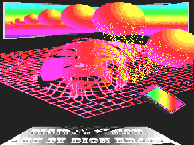All animals with backbones, including humans, are chordates. That is, in the language of taxonomy, they belong to the phylum Chordata. Their subphylum is Vertebrata, meaning that their backbones are segmented. Mammals, members of the class Mammalia of vertebrate animals that includes humans, are the most highly advanced organisms on Earth. They are warm-blooded, hairy, have four-chambered hearts, relatively large brains, and they suckle their young.
There are 19 orders of mammals in the world. Ten of these live in North America. Some orders include a wide range of animals; for example, shrews, lemurs, marmosets, monkeys, apes, and humans are all primates, one order of the class of mammals. Other orders are made up of only one sort of creature; Order Chiroptera, or example, consists of 18 families of bats.
The Latin names of the orders of mammals given here are followed by their common names and the families that make up each order. Examples of the various types of animals included in each family also are given.
Order Artiodactyla (even-toed hoofed animals)
Hoofed animals with an even number of toes include those that ruminate, or digest their food in four-chamber stomachs and chew cuds, and those that do not ruminate. Those that ruminate are the families Girrafidae (giraffes). Cervidae (deer, moose, reindeer, elk). Antilocapridae (pronghorn antelope), and Bovidae (cattle, bison, yaks, waterbucks, wildebeest, gazelles, springboks, sheep, musk oxen, goats). Nonruminators include the families Suidae (pigs), Tayassuidae (peccaries), Hippopotamidae (hippopotamuses), and Camelidae (camels, llamas).
Order Carnivora (meat-eaters)
There are two suborders of these toe-footed creatures. They include the Canidae (wolves, dogs, jackals, foxes), Ursidae (bears, giant pandas), Procyonidae (coatis, raccoons, lesser pandas), and Mustelidae (martens, weasels, skunks, otters), all part of one superfamily that is characterized by long snouts and unretractable claws; and Felidae (cats, lions, cheetahs, leopards) Hyaenidae (hyenas), and Viverridae (mongooses, civets), all of which have retractable claws.
Order Cetacea (whales and purpoises)
Two suborders of Order Cetacea are the toothed whales, which have regular conical teeth, and the baleen, or whalebone, whales, which have irregular whalebone surfaces instead of teeth. Toothed whales include the families Physeteridae (sperm whales), Monodontidae (narwhals, belugas), Phocoenidae (porpoises), and Delphinidae (dolphins, killer whales). Baleens are in the family Eschrichtiidae (gray whales), Balaenidae (right whales), or Balaenoptridae (fin-backed whales, hump-backed whales).
Order Chiroptera (bats)
There are two suborders of bats, the only mammals that can fly. Suborder Megachiroptera contains one family, the Pteropodidae (flying foxes, Old Worm fruit bats). Suborder Microchiroptera contains 17 families, including: Rhinopomatidae (mouse-tailed bats), Emballonuridae (sheath tailed bats), Craseonycteridae (hog-nosed or butterfly bats), Noctilionidae (bulldog or fisherman bats), Nycteridae (slit-faced bats), Megadermatidae (false vampire bats), and Rhinolophidae (horseshoe bats).
Order Dermoptera (colugos or flying lemurs)
These gliding tree mammals from Asia do not fly and are not lemurs, but they are known as flying lemurs, or Family Cynocephalidae .
Order Edentata (toothless mammals)
Three families of mammals get by without teeth: Dasypodidae (armadillos), Bradypodidae (sloths), and Myrmecophagidae (hairy anteaters).
Order Hyracoidae (hyraxes, dassies)
Order Hyracoidae is one of three orders that has only one modern family remaining. Procavia capensis (the African rock hyrax) is one of nine living species in the Family Procaviidae .
Order Insectivora (insect-eaters)
The three members are the families Talpidae (moles), Soricidae (shrews), and Erinaceidae (hedgehogs).
Order Lagomorpha (pikas, hares, and rabbits)
Two families make up this order: Ochotonidae (pikas) and Leporidae (hares and rabbits of all sorts).
Order Marsupialia (pouched animals)
Included among these are the families Caenolestidae (rat opossums), Diddeelphidae (true opossums), Dasyuridae (native cats, native mice), Notoryctidae (marsupial moles), Myrmecobiidae (numbats), Peramelidae (bandicoots), Phalangeridae (koalas), Vombatidae (wombats), and Macropodidae (kangaroos and wallabies).
Order Monotremata (egg-laying mammals)
These more primitive mammals make up the families Tachyglossidae (echidnas, also called spiny anteaters) and Ornithorhynchidae (platypuses).
Order Perissodactyla (odd-toed hoofed animals)
The two suborders, Hippomorpha and Ceratomorpha, include creatures that have an odd number of toes. Families in this order are the Equidae (horses, donkeys, zebras), the Tapiridae (tapirs), and the Rhinocerotidae (rhinoceroses).
Order Pholidata
Family Manidae (pangolins) is the sole family in this order.
Order Pinnipedia (seals and walruses)
In the fin-footed order there are Otariidae (eared seals, sea lions), Odobenidae (walruses), and Phocidae (earless seals).
Order Primates (primates)
The order to which people belong is divided into two suborders: The Prosimii , who have longer snouts than their relatives, and the Anthropoidae . The first group includes the families Tupalidae (tree shrew), Lemuridae (lemurs), Daubentonlidae (aye-ayes), Lorisidae (lorises, pottos), and Tarsiidae (tarsiers). The anthropoids include the families Callitrichidae (marmosets), Cebidae (New World monkeys), Cercopithecidae (baboons, Old World monkeys), Hylobatidae (gibbons), Pongidae (gorillas, chimpanzees, orangutans), and Hominidae (human beings).
Order Proboscidea (elephants)
Large enough to have an order all to itself is Family Elephantidae .
Order Rodentia (gnawing mammals)
The most prolific mammals, Order Rodentia includes three suborders. It takes in the families Aplodontidae (mountain beavers), Sciuridae (chipmunks, squirrels, marmots), Cricetidae (field mice, lemmings, muskrats, hamsters, gerbils), Muridae (Old World mice, rats), Heteromyidae (New World mice), Geomyidae (gophers), and Dipodidae (jerboas).
Order Sirenia (dugongs and manatees)
The families Trichechidae (manatees) and Dugongidae (dugongs and other sea cows) make up the Order Sirenia .
Order Tubulidentata (aardvarks)
Another mammal in an order by itself is Family Orycteropodidae.

